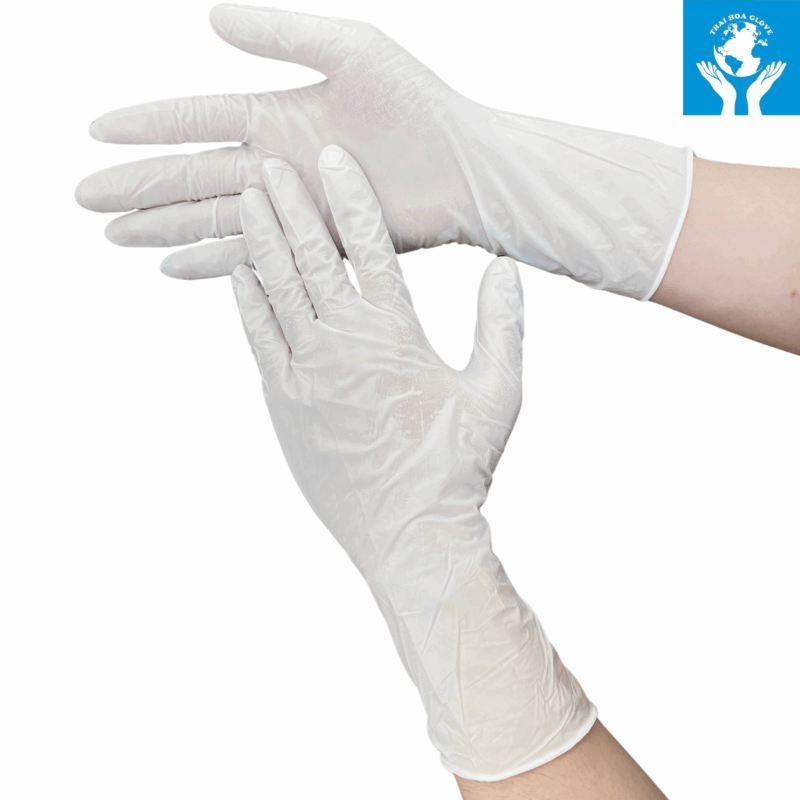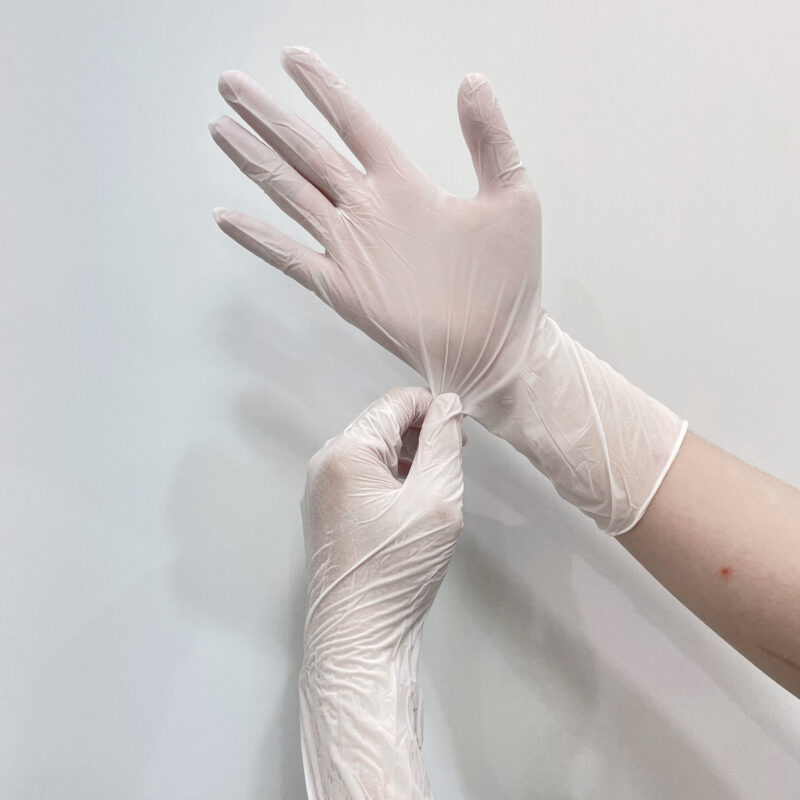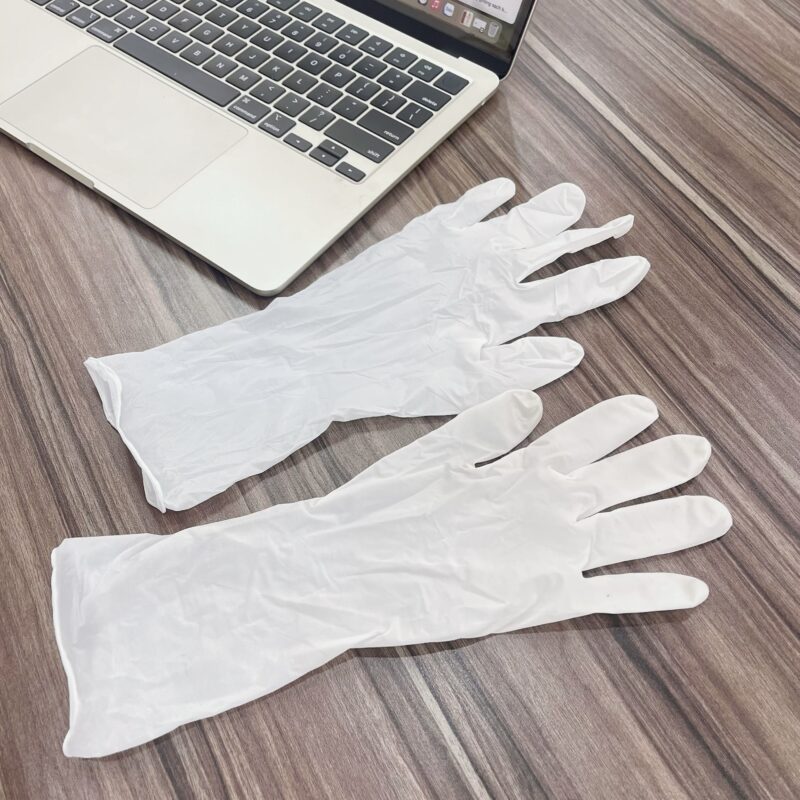In industries such as electronics, healthcare, cleanrooms, chemicals, or food processing, protective gloves play an essential role in ensuring safety, hygiene, and operational efficiency. Among many technical factors, glove thickness is one of the most important considerations. However, not everyone fully understands how glove thickness impacts work performance, durability, and protection capabilities.
This article will help you clearly understand the role of glove thickness and how to select the most suitable product for your specific application needs.

1. What Is Glove Thickness?
Glove thickness is usually measured in mils (1 mil = 0.0254 mm) or microns (1 micron = 0.001 mm). Disposable gloves—such as nitrile or latex gloves—typically range from 2 mil to 8 mil in thickness.
- Thin gloves: 2 – 4 mil
- Standard gloves: 5 – 6 mil
- Thick gloves: 7 – 8 mil and above

2. How Does Glove Thickness Affect Performance?
✅ 2.1. Mechanical Strength and Protection Capability

Thicker gloves generally offer:
- Higher tear resistance
- Better puncture resistance against sharp objects
- Longer chemical resistance (especially with nitrile gloves)
In high-risk environments such as:
- Handling solvents
- Chemical cleaning
- Working with sharp tools
→ Thicker gloves are a safer and more durable choice.
✅ 2.2. Dexterity and Tactile Sensitivity

On the other hand, thinner gloves provide:
- Better tactile feedback
- Easier handling of delicate tasks
- More flexibility for long-term wear
Ideal for industries such as:
- Healthcare, dentistry
- Precision electronics assembly
- Advanced laboratory work
→ Thin gloves are preferred when fine manipulation is required.
✅ 2.3. Usage Duration
- Thicker gloves can typically be worn for longer periods and are less likely to tear during extended use.
- Thinner gloves may require more frequent replacement if used continuously.
→ Cost-effectiveness should be considered based on usage time and replacement frequency.
4. Important Notes When Choosing Glove Thickness
🔹 4.1. Consider Usage Context, Not Just Specifications
For example:
- A 4 mil nitrile glove may be sufficient for a Class 1000 cleanroom.
- However, it may not provide adequate protection for frequent acid exposure.
🔹 4.2. Combine Thickness with Material Choice
- A 6 mil nitrile glove is generally more durable than a 6 mil latex glove.
- Thin latex gloves tend to be softer and more elastic than nitrile gloves of the same thickness.
🔹 4.3. Balance Protection with Dexterity
- Environments that require speed and precision → prefer thin gloves.
- Environments with hazards or chemical exposure → prefer thick gloves.
5. Nitrile Gloves – The Perfect Balance of Thickness & Performance
At Thai Hoa Glove, powder-free nitrile gloves are available in various thickness options:
- 3.5 mil – 4 mil: Ideal for medical, cleanroom, and electronics industries.
- 5 mil – 6 mil: Suitable for food processing, pharmaceuticals, laboratories.
- 7 mil – 8 mil: Best for industrial cleaning, chemical handling, and maintenance tasks.
All products meet these standards:
- Powder-free – to reduce particle contamination.
- Excellent chemical resistance.
- High durability – superior tear resistance.
- Available for ESD or cleanroom environments (depending on the specific product line).
6. Conclusion
Glove thickness has a direct impact on work performance, protection level, and handling comfort. Choosing the correct thickness helps optimize work efficiency, reduce the risk of glove tearing, and prevent occupational accidents.
👉 If you’re unsure about the appropriate glove thickness for your production environment, contact Thai Hoa Glove for expert consultation tailored to your industry and application.
Thai Hoa – The only cleanroom glove manufacturer in Vietnam.
📞 Hotline: 0982 832 915 – 0986 154 291
📩 Email: info@thaihoagloves.com
📘 Fanpage: Glorex Glove
🌐 Website: thaihoagloves.com








